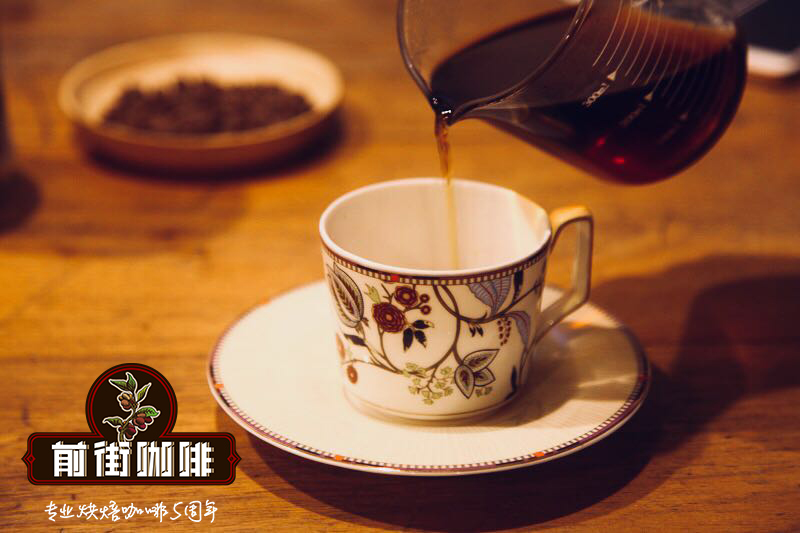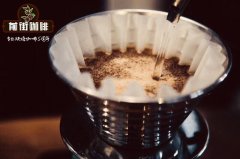Which of the main African coffee producing areas is more famous? What flavor does the coffee bean prefer?

Professional coffee knowledge exchange more coffee bean information please follow the coffee workshop (Wechat official account cafe_style)
Qianjie-A brief introduction to the Yega Xuefei producing area in Ethiopia
Ethiopia
Ethiopia is located in a country full of wonders, where all Arabica coffee comes from. The Kaffa Forest is the beginning of everything. Kaffa is located in the southwest of Ethiopia.
In the centuries-long natural evolution of Kaffa, about 5000 species of coffee have been born. At present, the local community manages about 12000 hectares of Kaffa wild coffee area. Through the introduction of participatory forest management (Participatory Forest Management, or PFM), about 4500 farmers have the right to legally harvest wild coffee cherries and have an obligation to protect the forest. With regard to Kaffa, it is rumored that it was the first place to brew coffee, and for coffee people, it is as fascinating as the Garden of Eden.
In Kaffa, an area called Bonga, more than 100 Ethiopians are dedicated to growing high-quality Arabica coffee. Here has an excellent coffee growing environment, elevation between 1600-1900 meters, red soil, suitable temperature. The region has high rainfall, so it is considered to be one of the areas with the highest rainfall in Ethiopia. As one of the first two biological conservation circles in Ethiopia, Gesha is known as a region of Kaffa.
Kaffa coffee (originally Kaffa types) usually includes: Gimbo, Gewata and Chena. "
Coffee cultivation in ● Ethiopia
Since Ethiopia changed the administrative division before and after 1995, the greatest impact on the coffee area is that the original Sidamo Sidamo province is divided into the new Sidamo Sidama (the original minority), and most of it is classified into the Oromia Oromia state, and Yegashifi, which used to belong to the Sidamo province, is now included in the new Gaideo district Gedeo.
At present, there will be a mixture of new and old regional names in the Ethiopian coffee products in circulation on the market. Here we take the new regional division as the basis, combined with the administrative region to understand the coffee growing map of Ethiopia.
Most of the coffee cultivation of [Yejia Xuefei] belongs to the pastoral coffee model, in which coffee farmers plant coffee trees near their living areas and harvest them during the harvest season. it is then sent to a nearby treatment plant built on water for unified treatment (or purchased by a middleman). In addition to a small number of plantations that have the strength to grow, pick and handle raw coffee beans independently, many coffee beans from different regions and varieties will be centrally processed by the processing plant and then sent to the auction house for official evaluation and grading.
This is why many Ethiopian coffee beans are named after processing plants or cooperatives, and it is also one of the reasons why the same batch of coffee beans are mixed with multiple coffee varieties. even the flavor of different batches of coffee beans produced by the same treatment plant will be significantly different. Washed Yega Chuefei has very elegant aromas of flowers and fruits, lemon, jasmine and berries.
Knowledge expansion: as the largest raw bean company in the Netherlands, Trabocca has been ploughing Ethiopia for nearly 20 years, not only bringing organic certification to Ethiopia for the first time, but also launching the well-known "Red Cherry Project" and launching the "The Ethiopian Cup Essex Cup" raw bean auction project in the past two years.
In short: Qianjie is a coffee research hall, happy to share the knowledge about coffee with you, we share unreservedly just to make more friends fall in love with coffee, and there will be three low-discount coffee activities every month. The reason is that Qianjie wants to make more friends drink the best coffee at the lowest price, which has been Qianjie's tenet for 6 years!
END
Important Notice :
前街咖啡 FrontStreet Coffee has moved to new addredd:
FrontStreet Coffee Address: 315,Donghua East Road,GuangZhou
Tel:020 38364473
- Prev

What is the coffee bean variety in Ethiopia? what are the taste characteristics of Yega Snow Coffa?
For more information on coffee beans, please follow the front street of Coffee Workshop (official Wechat account cafe_style)-A brief introduction to the Yegashafi region of Ethiopia in the early days of the third wave of coffee, native species were often used to describe Ethiopian coffee, but this is not an accurate statement. As people do not fully understand these varieties at all, it leads to many local hygiene.
- Next

Donkey Manor Coffee good? donkey Manor Coffee area where is the Panamanian Donkey Manor
For more information on coffee beans, please follow Coffee Workshop (Wechat official account cafe_style) Donkey Manor: El Burro Coffee is produced on one of the quietest coffee farms in Panama and, like Elida Farm, it is part of the Baru Volcano National Park. Organic planting, shading planting, bird-friendly, the farm is located in a very high sea
Related
- Beginners will see the "Coffee pull flower" guide!
- What is the difference between ice blog purified milk and ordinary milk coffee?
- Why is the Philippines the largest producer of crops in Liberia?
- For coffee extraction, should the fine powder be retained?
- How does extracted espresso fill pressed powder? How much strength does it take to press the powder?
- How to make jasmine cold extract coffee? Is the jasmine + latte good?
- Will this little toy really make the coffee taste better? How does Lily Drip affect coffee extraction?
- Will the action of slapping the filter cup also affect coffee extraction?
- What's the difference between powder-to-water ratio and powder-to-liquid ratio?
- What is the Ethiopian local species? What does it have to do with Heirloom native species?

